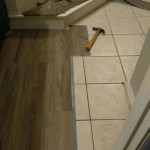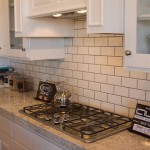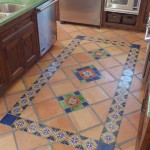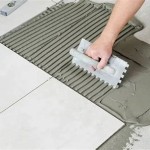Do I Need Cement Board Under Bathroom Tile Floor?
When it comes to installing tile floors, especially in areas like bathrooms that are prone to moisture, using the right materials and techniques is crucial for ensuring a durable and long-lasting result. One of the key considerations is whether or not to install cement board underneath the tile.
What is Cement Board?
Cement board, also known as backer board, is a type of fiber-reinforced concrete panel that is specifically designed for use as a substrate for tile installations. It is made from a mixture of cement, sand, and cellulose fibers and is typically available in various thicknesses and sizes.
Installing cement board under bathroom tile floors offers several advantages:
1. Moisture Resistance:
Cement board is highly moisture resistant, which makes it an ideal choice for wet areas like bathrooms. It does not absorb water, swell, or rot, unlike traditional wood or gypsum-based backer boards. This helps to prevent damage to the tile and grout, ensuring a longer lifespan for the floor.
2. Strength and Stability:
Cement board is a strong and stable material that provides a solid base for tile installations. It helps to prevent the tiles from cracking or becoming loose over time, especially in areas with heavy traffic or potential movement.
3. Uniform Surface:
Cement board provides a smooth and uniform surface for tile installation. It helps to fill in any unevenness in the subfloor, creating a level and consistent base for the tiles. This results in a more professional-looking finished floor.
4. Fire Resistance:
Cement board is fire-resistant, which adds an extra layer of safety to your bathroom. It can help to slow down the spread of fire and protect the structure of your home in the event of a fire.
While cement board is not always required for tile installations, there are certain situations where it is highly recommended or even necessary:
1. Wet Areas:
As mentioned earlier, cement board is essential for tile floors in areas that are exposed to moisture, such as bathrooms, showers, and laundry rooms. Its moisture resistance helps to prevent damage and prolong the life of the floor.
2. Uneven Subfloors:
If the subfloor beneath the tile is uneven or damaged, cement board can be used to create a level and stable surface for the tile installation.
3. Large Tile Installations:
For large tile installations, especially those with tiles larger than 12 inches in size, using cement board can provide additional support and prevent the tiles from cracking or becoming loose.
Using cement board under bathroom tile floors is highly recommended for its moisture resistance, strength, stability, and fire resistance. It provides a durable and long-lasting base for your tile installation, ensuring a beautiful and functional bathroom floor for years to come. If you are considering installing tile in your bathroom, be sure to consult with a qualified professional to determine if cement board is necessary for your specific project.

How To Install Cement Board On A Floor Diy Family Handyman

Installing Cement Board In The Bathroom

Cement Board Installation On Floors 5 Mistakes To Avoid Diytileguy

Easily Install Cement Board To Prep For Tile Installation

Tile Underlayment The Complete Guide For Beginners Diytileguy

How To Install Cement Board For Tile Bower Power

Installing Cement Board In The Bathroom

Guest Bathroom Renovation Insulation And Cement Board Installation

How To Install Cement Board For Tile Bower Power

Floor Tile Part 1 Installing Cement Backer Board Handy Mandy
Related Posts








